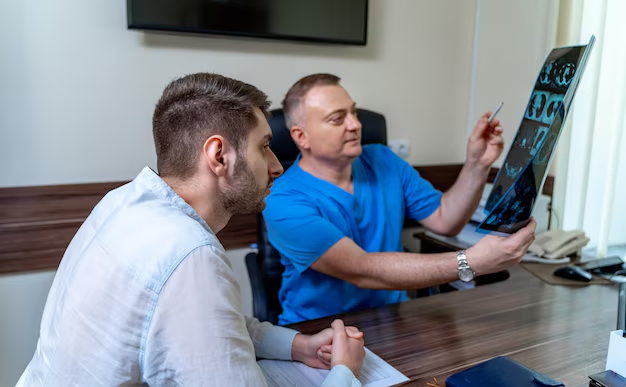Guarding Against Aneurysms: A Comprehensive Guide to Prevention
Aneurysms, those potentially life-threatening balloon-like bulges in your blood vessels, can be as silent as they are dangerous. While many people are unaware of their presence until complications arise, it's crucial to understand that aneurysms aren't entirely out of your hands. By adopting certain lifestyle adjustments and being informed, you can significantly reduce your risk. Here’s an engaging guide on how you can proactively prevent aneurysms, encompassing multiple facets of prevention.
Understanding Aneurysms: The Silent Threat
When discussing aneurysms, we often refer to abnormal bulges in the wall of a blood vessel. They can occur in various forms and locations, with abdominal aortic aneurysms and cerebral aneurysms (brain) being among the most concerning.
Types of Aneurysms
- Cerebral Aneurysms: Occur in the brain and pose a risk of causing a sudden hemorrhagic stroke.
- Abdominal Aortic Aneurysms (AAA): Found in the largest blood vessel in the abdomen; they can lead to severe internal bleeding if ruptured.
- Thoracic Aortic Aneurysms: Occur in the chest region and can disrupt blood flow to the rest of the body.
Understanding the type of aneurysm at risk can help in preventive measures aimed at its specific triggers.
Key Risk Factors You Should Know
Identifying risk factors is a stepping stone to prevention. Some risks are beyond control, such as age and genetics, but many factors can be managed with conscious effort:
- High Blood Pressure: Elevated pressure on artery walls is a significant risk factor.
- Smoking: This habit deteriorates blood vessel walls and accelerates aneurysm formation.
- High Cholesterol: Contributes to plaque buildup, increasing the risk of abdominal aorta aneurysms.
- Family History: A background of aneurysms in the family necessitates more vigilant monitoring.
- Gender and Age: Men over 60 are more prone to abdominal aortic aneurysms, while women are slightly more at risk for cerebral aneurysms, especially after age 40.
Lifestyle Modifications for Aneurysm Prevention
Adopting a Heart-Healthy Diet
A nutrient-rich diet remains one of your first defenses against aneurysms. Consider focusing on the following:
- Increase Omega-3s: These healthy fats found in fish like salmon and flaxseeds help lower cholesterol and maintain flexible blood vessels.
- Fruits and Vegetables: Loaded with antioxidants, they protect the vessel walls from oxidative damage.
- Whole Grains: Choosing whole grain over refined carbohydrates supports heart health by maintaining healthy blood pressure levels.
Regular Exercise: More Than a Heart Guardian
Being active is another non-negotiable when it comes to cardiovascular health:
- Cardiovascular Exercise: Activities like walking, cycling, or swimming help regulate blood pressure and reduce stress.
- Strength Training: Supports cardiovascular health by controlling body weight and improving muscle health, which tracks closely with metabolic fitness.
Quitting Smoking: Immediate Benefits
The benefits of quitting smoking extend beyond the lungs:
- Improved Vessel Health: Smoking cessation leads to lowered blood pressure and quickly decreases the risk of aneurysm growth.
- Long-term Benefits: Over time, non-smoking restores vascular elasticity and improves overall blood flow.
Managing Stress: An Overlooked Necessity
Chronic stress elevates blood pressure, contributing indirectly to aneurysm risk:
- Mindfulness Practices: Incorporate meditation, yoga, or deep breathing exercises into daily routines to gain control over stress.
- Adequate Sleep: Ensures the body repairs itself, fostering optimum vasculature health.
Monitoring and Early Detection: Vigilance is Crucial
Preventive healthcare isn't complete without regular check-ups:
- Screening for High-Risk Individuals: If you fit the profile for any form of aneurysm, regular ultrasound or MRI scans can be life-saving.
- Blood Pressure Monitoring: Regularly checking helps manage and anticipate risks effectively.
- Cholesterol Levels: Routine blood tests to ensure cholesterol and triglycerides remain within healthy ranges.
Understanding Medical Options and Innovations
Medical advancements continue to enhance protective and diagnostic measures against aneurysms:
- Medications: While we avoid prescribing, being aware that certain medications can aid in controlling blood pressure and cholesterol is useful.
- Surgical Interventions: In cases of detected aneurysms, procedures like stent placements or surgical repairs may preempt ruptures.
Cutting-edge Research
Keeping an eye on emerging research might offer additional preventive strategies:
- Gene Therapy Prospects: Early studies indicate that gene therapies might repair or prevent weakened artery walls.
- Biomarkers for Detection: Newer biomarkers are being explored to predict aneurysm risks with greater precision.
Conclusion: Empowering Yourself with Knowledge
Preventing aneurysms requires a multi-faceted approach centered around informed, proactive lifestyle choices. While genetic factors may be beyond control, strides toward healthier habits, regular health screenings, and cessation of harmful activities like smoking widen the buffer zone against potential aneurysms.
Every step towards a healthier lifestyle not only strengthens your defense against aneurysms but fortifies overall well-being. Stay informed, stay active, and take charge of your vascular health.
Quick Reference: Your Aneurysm Prevention Checklist
- 🥗 Eat Heart-Healthy Foods: Prioritize omega-3-rich foods, fruits, and whole grains.
- 🏃♂️ Stay Active: Engage in regular cardio and strength training exercises.
- 🚭 Quit Smoking: Gain immediate and long-term vascular benefits.
- 🧘 Manage Stress: Incorporate mindfulness practices and prioritize sleep.
- 🩺 Get Regular Check-Ups: Monitor blood pressure, cholesterol, and consider screenings if at risk.
- 🔍 Stay Informed: Keep abreast of research and advancements in vascular health management.
